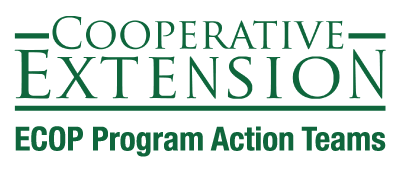Program Action Teams
Health Equity and Well Being
Background
Imagine a world where all people can live long and healthy lives. It’s a world focused on keeping people healthy rather than waiting for them to become ill. It’s a world focused on ensuring that communities provide residents with the resources they need to be healthy. It’s a world where making healthy choices is easy. But for far too many people, a goal of optimal health is out of reach.
Life expectancy in the United States currently stands at 77.5 years of age. Even with a slight uptick in 2022, the multi-year downward trend in life expectancy still leaves the United States far from its all-time high. Meanwhile, the United States spends a greater portion of its GDP on health care than any nation in the world but the gap in life expectancy between the United States and other peer countries is widening. This current health crisis not only threatens the health of individuals but also threatens the economy, national security, and social order.
Heart disease remains the leading cause of death in the United States. Other prominent causes of death include cancer, COVID-19, unintentional injuries (including overdose deaths), and stroke.
Since its early days, the Cooperative Extension System (CES) has played an important role in improving the health of the nation. Much of that early work focused on promoting healthy behaviors. Since then, we have learned that the context in which people live has a far greater impact on their overall health than their personal health behaviors.
While we must all accept personal responsibility for doing what we can to maintain and improve our own health, we as a nation must act now to eliminate the obstacles that many people face in their efforts to achieve optimal health. Among those experiencing the greatest number of obstacles are people of color and those living in the most urban and the most rural areas of the country.
How is the Cooperative Extension System responding?
Translating the health-related knowledge of the land grant university system in ways that help people make healthy choices will remain a part of Cooperative Extension’s work. But with only 30% of an individual’s health being determined by their behaviors, a more comprehensive approach to improving population health is needed.
Cooperative Extension’s National Framework for Health Equity and Well-Being emphasizes a dual approach for Cooperative Extension’s health-focused work. One dimension of that work involves continued efforts to help individuals make healthy choices. The other involves engaging with residents of a community to identify and address the barriers and challenges to achieving optimal health. Efforts are currently underway to provide Extension faculty and staff with the training they need to facilitate place-based processes that help communities thrive. The goal of these efforts is to ensure that residents have access to such things as jobs, humane housing, education, preventive health services, healthy foods, safe streets, and clean water.
This upstream work in no way replaces the work of local health departments or healthcare professionals, but rather focuses on shaping the context in which people live their lives.

What difference is Cooperative Extension making?
By incorporating community development principles and practices into its health-related work, Cooperative Extension and its partners are transforming communities in ways that promote the health and well-being of their residents. Meanwhile Cooperative Extension, also is providing residents of these communities with science-based information they need to make healthy choices. The result is a thriving population that is less likely to experience chronic disease, is more resilient to future health threats, and is less dependent upon emergency health services.
What can be done with additional resources and partnerships?
Extension staff are currently being provided with the training they need to support collective action in communities. Still, the number of communities Cooperative Extension can serve is limited by the number of faculty and staff that it can deploy in its county offices. Resources are needed to hire additional Extension staff who already have the knowledge and skills needed to support the transformation to a place-based approach to improving health.
Moreover, many land grant universities do not have dedicated faculty leads who can coordinate and support a systemwide transition to a more place-based orientation Cooperative Extension’s work. Such responsibilities are currently an add-on to individuals with other responsibilities.
Contact Information
PAT Leader:
Roger Rennekamp
Kerry Gabbert
USDA-NIFA Liaisons:
Sheila Fleishhacker
Edwin Lewis
Contact:
Roger Rennekamp




